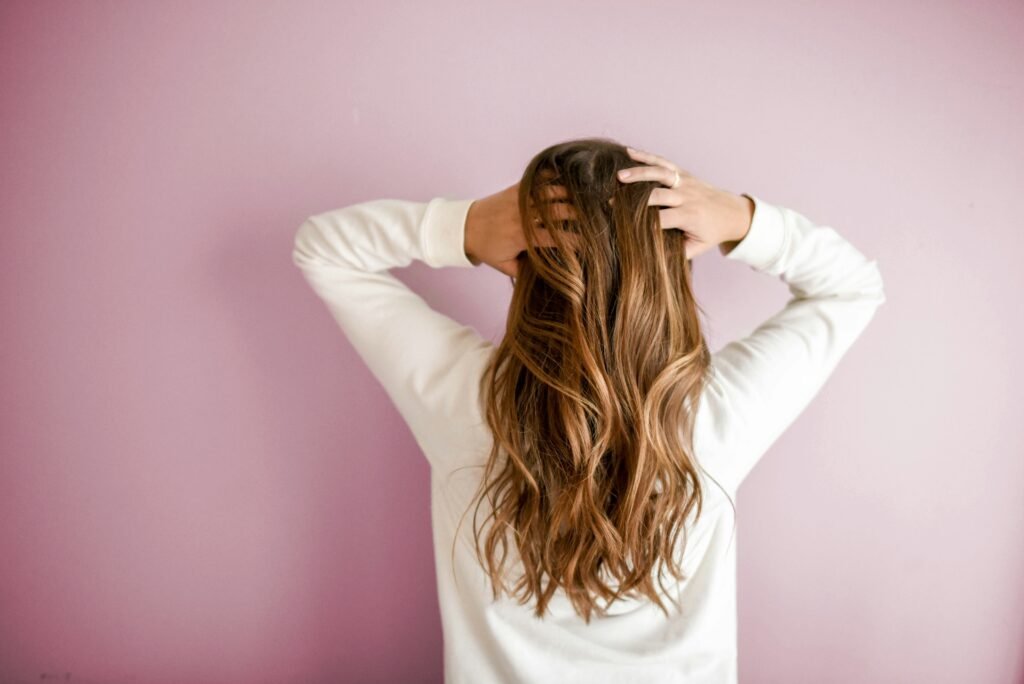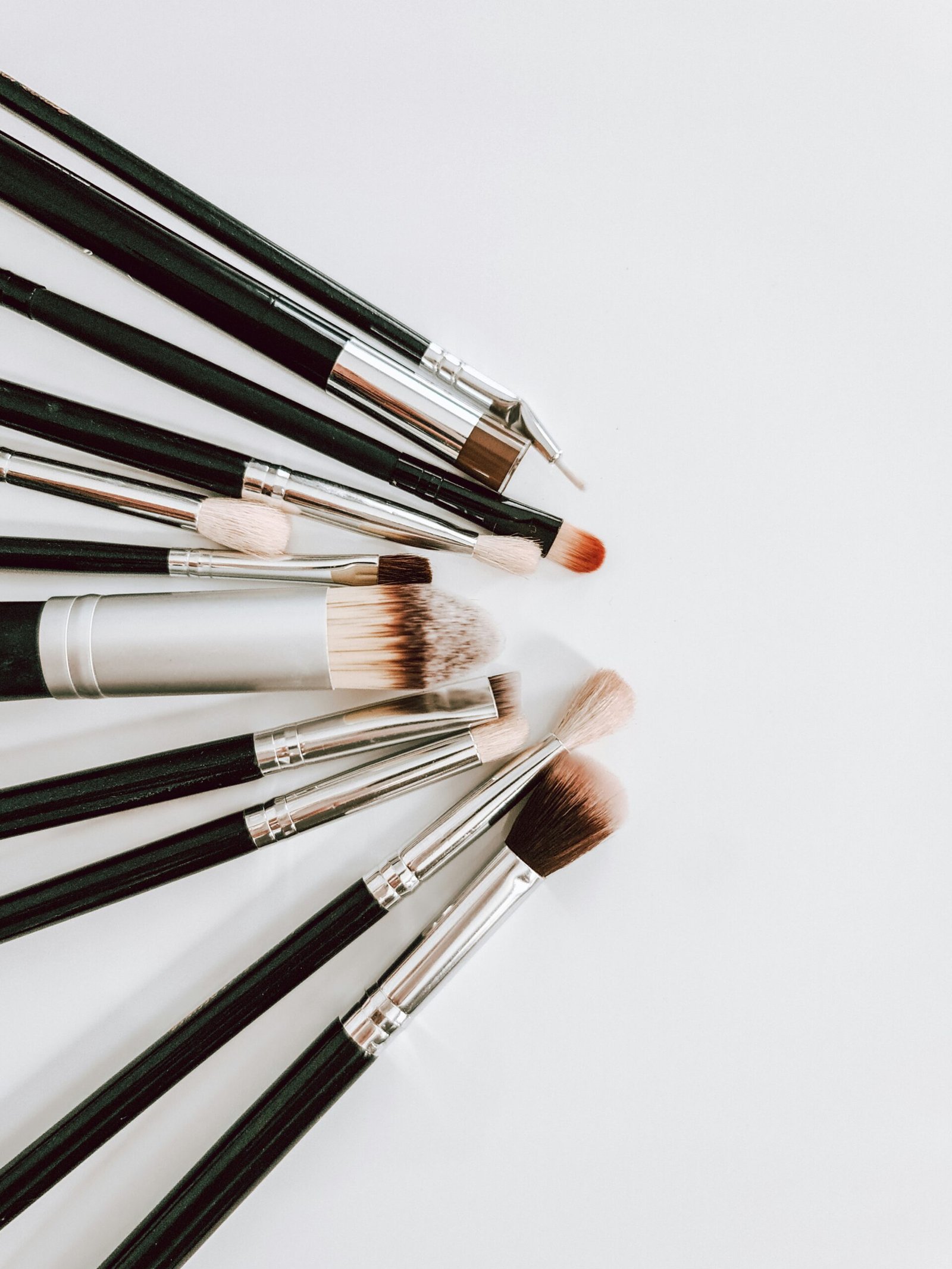If you’ve been wanting to lighten your hair without the use of harsh chemicals, you’re in luck! There are several natural methods you can adopt to achieve a beautifully sun-kissed look. From lemon juice to chamomile tea, these easy and affordable remedies will help you naturally lighten your hair, leaving you with a gorgeous and radiant mane. So, if you’re ready to learn some simple yet effective ways to lighten your hair naturally, read on!

1. Lemon Juice
1.1 Overview of Using Lemon Juice
Lemon juice is a popular and natural method to lighten hair without the use of harmful chemicals. It is easy to find, affordable, and safe to use on most hair types. Many people have found success using lemon juice to achieve lighter hair shades and highlights.
1.2 How Lemon Juice Lightens Hair
Lemon juice contains citric acid, a natural bleaching agent. When applied to the hair and exposed to sunlight, the citric acid in lemon juice interacts with the melanin in the hair, lightening the hair color. The acid opens up the hair cuticles, allowing the sunlight to penetrate deeper and break down the pigment.
1.3 Precautions and Tips
Before using lemon juice on your hair, it is important to keep the following precautions and tips in mind:
- Patch test: Perform a patch test on a small section of your hair to ensure that you do not have any adverse reactions. Lemon juice may not be suitable for everyone, especially those with sensitive scalps or dry hair.
- Dilute with water: Mix lemon juice with an equal amount of water to prevent the high acidity from damaging your hair.
- Sun exposure: Lemon juice needs sunlight to activate its lightening properties, so it is recommended to apply it before spending time outdoors.
- Moisturize: Lemon juice can have a drying effect on the hair, so it is important to follow up with a deep conditioning treatment to restore moisture.
2. Honey
2.1 Overview of Using Honey
Honey is not only a sweet treat for your taste buds, but it can also be used as a natural hair lightener. It is a gentle and safe alternative to chemical hair lightening products. Honey is known for its moisturizing properties, making it a great option for those with dry or damaged hair.
2.2 How Honey Lightens Hair
Honey contains an enzyme called glucose oxidase, which produces hydrogen peroxide when mixed with water. Hydrogen peroxide is a natural bleaching agent that can lighten the hair color. Additionally, honey helps to moisturize the hair, resulting in softer and healthier locks.
2.3 Precautions and Tips
When using honey to lighten your hair, consider the following precautions and tips:
- Use raw honey: Opt for raw and unprocessed honey, as it retains more of its natural enzymes and nutrients.
- Mix with water or conditioner: Dilute the honey with water or mix it with your regular conditioner before applying it to your hair. This will make it easier to distribute and rinse out.
- Rinse thoroughly: Honey is sticky and can be difficult to remove from the hair, so make sure to rinse your hair thoroughly after treatment.
- Be patient: Honey might not provide instant results, so it may require multiple applications over time to achieve the desired lightening effect.
3. Chamomile Tea
3.1 Overview of Using Chamomile Tea
Chamomile tea is a popular herbal remedy known for its soothing properties, but it can also be used to naturally lighten the hair. It is a gentle and non-damaging option for achieving subtle highlights and lightening overall hair color.
3.2 How Chamomile Tea Lightens Hair
Chamomile tea contains natural compounds, such as apigenin, which can lighten the hair when activated by heat or sunlight. It gradually lightens the hair by interacting with the melanin pigment, resulting in a gradual change in hair color.
3.3 Precautions and Tips
Before using chamomile tea to lighten your hair, consider the following precautions and tips:
- Brew a strong infusion: To maximize the lightening effect, brew a strong chamomile tea by steeping multiple tea bags or flowers in hot water for an extended period.
- Apply to clean hair: Make sure your hair is clean and free from any styling products before applying the chamomile tea. This ensures better absorption and effectiveness.
- Heat activation: After applying the tea to your hair, sit in the sun or use a hairdryer on low heat to activate the lightening properties of chamomile.
- Regular treatments: For noticeable results, repeat the chamomile tea treatment regularly over several weeks. Results may vary depending on individual hair type and color.
4. Cinnamon
4.1 Overview of Using Cinnamon
Cinnamon, known for its warm and spicy fragrance, can also be used to naturally lighten hair. It is a popular choice for those aiming for auburn or reddish highlights, especially on darker hair tones.
4.2 How Cinnamon Lightens Hair
Cinnamon contains a compound called cinnamaldehyde, which has mild bleaching properties. When combined with a carrier oil or conditioner, cinnamon can help lighten the hair by subtly lifting the pigment, particularly in red and brown shades.
4.3 Precautions and Tips
When using cinnamon to lighten your hair, keep the following precautions and tips in mind:
- Start with a test strand: Since cinnamon can have a more noticeable lightening effect on certain hair colors, it is advisable to perform a strand test before applying it all over your hair.
- Mix with a carrier oil or conditioner: Create a paste by mixing cinnamon powder with a carrier oil, such as coconut or olive oil, or simply mix it with your regular conditioner. This helps in distributing the cinnamon evenly and prevents dryness.
- Apply and leave on: Apply the cinnamon paste to your hair, focusing on the areas you wish to lighten. Leave it on for several hours or overnight for better results, and then rinse it out thoroughly.
- Be patient: Cinnamon may not provide instant results and might require multiple applications before noticeable lightening occurs. Regular treatments over time will enhance the effect.

5. Baking Soda
5.1 Overview of Using Baking Soda
Baking soda, a versatile household ingredient, can also be used to lighten hair naturally. It is an affordable and easily accessible option for those looking to achieve lighter shades or remove residue from the hair.
5.2 How Baking Soda Lightens Hair
Baking soda has mild abrasive and alkaline properties that can help remove excess oil, product buildup, and some of the pigment from the hair. This can result in a subtle lightening effect, especially on already light or blonde hair.
5.3 Precautions and Tips
If you plan to use baking soda to lighten your hair, consider the following precautions and tips:
- Test sensitivity: Conduct a patch test on a small section of your hair to check for any adverse reactions or sensitivities to baking soda.
- Dilute with water: Baking soda can be harsh, so make sure to dilute it with water before using it on your hair. Start with a ratio of one part baking soda to three parts water.
- Apply to damp hair: Wet your hair slightly before applying the baking soda paste. This helps the mixture to spread evenly and prevents excessive drying.
- Rinse thoroughly: After applying the baking soda paste, rinse your hair thoroughly to remove all traces of the mixture. Apply a deep conditioner afterward to restore moisture.
6. Vinegar
6.1 Overview of Using Vinegar
Vinegar, specifically apple cider vinegar, has many potential benefits for hair, including natural lightening. It is a gentle and affordable option that can provide subtle highlights and remove product buildup.
6.2 How Vinegar Lightens Hair
The acidity of vinegar helps to remove residue from the hair, including excess oil and product buildup, which can make the hair appear darker. By removing this buildup, the hair’s natural highlights may become more pronounced, giving the appearance of lighter hair.
6.3 Precautions and Tips
When using vinegar to lighten your hair, keep the following precautions and tips in mind:
- Choose apple cider vinegar: Apple cider vinegar is the most commonly used vinegar for hair lightening due to its milder acidity and potential hair benefits.
- Dilute with water: Mix apple cider vinegar with water in a ratio of one part vinegar to one part water to prevent excessive damage or dryness to the hair.
- Rinse after use: After applying the vinegar mixture to your hair, rinse it out thoroughly to remove any strong odors and residue. Follow up with a conditioner to restore moisture.
- Regular treatments: Consistency is key when using vinegar for hair lightening. Regular treatments over time can help bring out natural highlights and maintain the desired lightening effect.

7. Salt
7.1 Overview of Using Salt
Salt is commonly associated with adding texture to hair, but it can also have a subtle lightening effect. It is a straightforward and cost-effective method to achieve sun-kissed beachy hair, creating a natural sunkissed appearance.
7.2 How Salt Lightens Hair
Salt acts as a natural exfoliant and can help remove excess oils and product buildup from the hair, which can darken the hair’s appearance. Additionally, salt can enhance the natural drying effect of sunlight, resulting in lighter hair over time.
7.3 Precautions and Tips
If you are considering using salt to lighten your hair, keep the following precautions and tips in mind:
- Use sea salt or Epsom salt: Opt for sea salt or Epsom salt, as they are less processed and contain minerals that can benefit the hair.
- Create a saltwater spray: Dissolve the salt in warm water to create a saltwater spray. Spray it on damp hair and scrunch or tousle the hair to distribute the mixture evenly.
- Sun exposure: For the best results, expose your hair to sunlight after applying the saltwater spray. The combination of salt and sunlight can gradually lighten the hair over time.
- Hydrate and condition: Salt can be drying to the hair, so it is important to hydrate and condition regularly to maintain its health and minimize any potential damage.
8. Rhubarb
8.1 Overview of Using Rhubarb
Rhubarb, a vegetable commonly used in baking and desserts, can also be utilized to lighten hair naturally. It is a lesser-known method but can provide subtle golden or reddish hues to the hair.
8.2 How Rhubarb Lightens Hair
Rhubarb contains natural compounds called anthraquinones, which have mild bleaching properties. These compounds work by interacting with the melanin pigment in the hair, resulting in subtle lightening effects, particularly on darker hair shades.
8.3 Precautions and Tips
When using rhubarb for hair lightening, keep the following precautions and tips in mind:
- Prepare a rhubarb rinse: Boil chopped rhubarb stalks in water to create a concentrated rhubarb rinse. Allow it to cool before using it on your hair.
- Strain the mixture: After boiling, strain the liquid to remove any solid particles and create a smooth rinse.
- Apply to clean hair: Make sure your hair is clean and free from any styling products before applying the rhubarb rinse. This ensures better absorption and effectiveness.
- Rinse thoroughly: After applying the rhubarb rinse to your hair, rinse it out thoroughly to remove any residue. Follow up with a conditioner to restore moisture and leave the hair smelling fresh.
9. Henna
9.1 Overview of Using Henna
Henna is a natural dye commonly used to color the hair, but it can also provide subtle lightening effects. It is a plant-based alternative to synthetic hair dyes, known for its conditioning properties and ability to add reddish undertones or highlights to the hair.
9.2 How Henna Lightens Hair
Henna contains natural pigments called lawsone, which can subtly lighten the hair color while depositing a reddish or coppery hue. However, it is important to note that henna is more suitable for those with darker hair shades, as it may not have a noticeable lightening effect on already light or blonde hair.
9.3 Precautions and Tips
If you plan to use henna to lighten your hair, consider the following precautions and tips:
- Choose pure henna: Opt for pure henna powder, also known as Lawsonia inermis, to avoid unwanted chemicals and additives.
- Mix with lemon juice or chamomile tea: Enhance the lightening effect of henna by mixing it with lemon juice or chamomile tea. The acidity and natural bleaching properties of these ingredients can enhance the overall lightening effect.
- Conduct a strand test: Before applying henna to your entire head, perform a strand test to observe the color and lightening results on a small section of your hair.
- Follow instructions: Different brands and types of henna may have specific instructions for application and processing time, so make sure to read and follow them carefully.
10. Exposure to Sunlight
10.1 Overview of Sunlight for Lightening Hair
Exposing your hair to sunlight is a natural way to lighten your hair color. While it may not provide dramatic results, regular sun exposure can gradually lighten the hair, especially when combined with other natural lightening methods.
10.2 How Sunlight Lightens Hair
Sunlight contains ultraviolet (UV) rays, which break down the melanin pigment in the hair. These UV rays can penetrate the hair shaft, resulting in the gradual lightening of the hair color.
10.3 Precautions and Tips
If you want to lighten your hair naturally with sunlight, consider the following precautions and tips:
- Protect your skin: While exposing your hair to sunlight, it is important to protect your skin by applying sunscreen or wearing a hat to avoid sunburn or damage.
- Choose optimal times: The best time to expose your hair to sunlight for natural lightening is during the early morning or late afternoon when the sun’s rays are less harsh.
- Be patient and consistent: Sunlight lightening is a gradual process that may take time, especially if you have darker hair shades. Consistency is key, so make sure to expose your hair to sunlight regularly over an extended period.
- Combine with natural methods: To enhance the lightening effect, combine sunlight exposure with natural lightening methods such as lemon juice, chamomile tea, or cinnamon. The combination can speed up the lightening process and create more noticeable results.
Remember, achieving the desired lightening effect naturally may require time and patience. Results can vary depending on individual hair type, color, and the method used. It is always a good idea to consult a professional hairstylist or dermatologist if you have any concerns or questions. Enjoy the journey of naturally lightening your hair and embracing your unique beauty!
Losing weight and keeping it off can be a challenge. I’m here to show you good-tasting foods and drinks that help you lose weight, and are enjoyable to eat.




